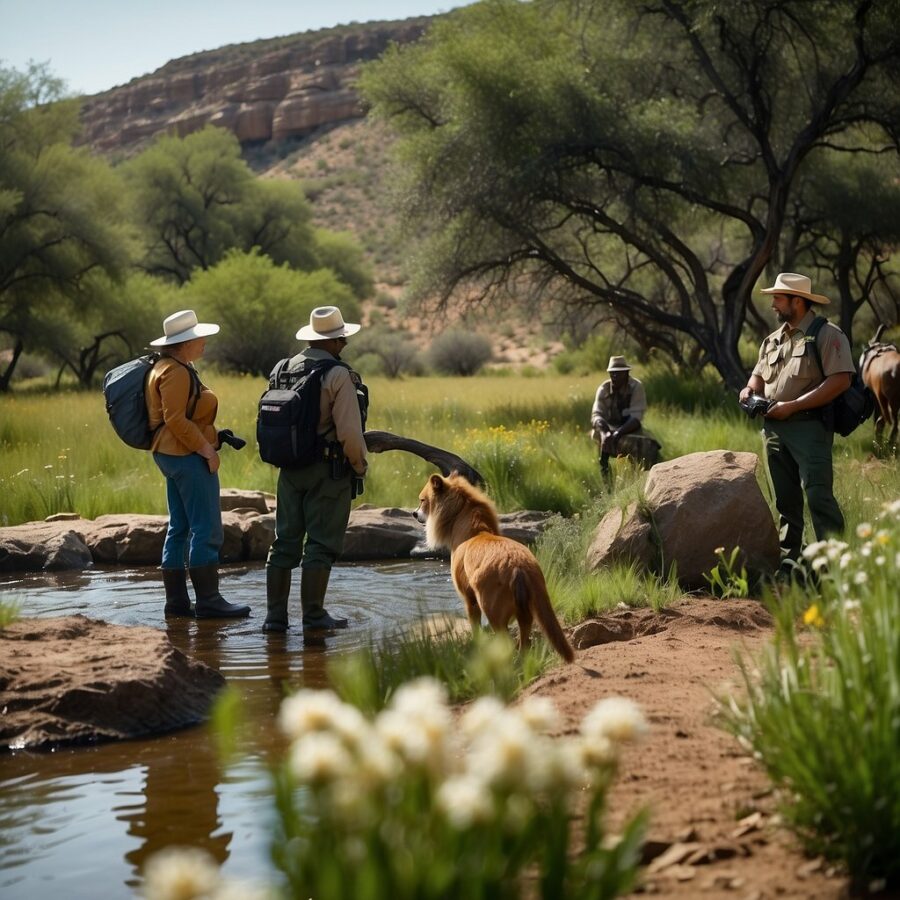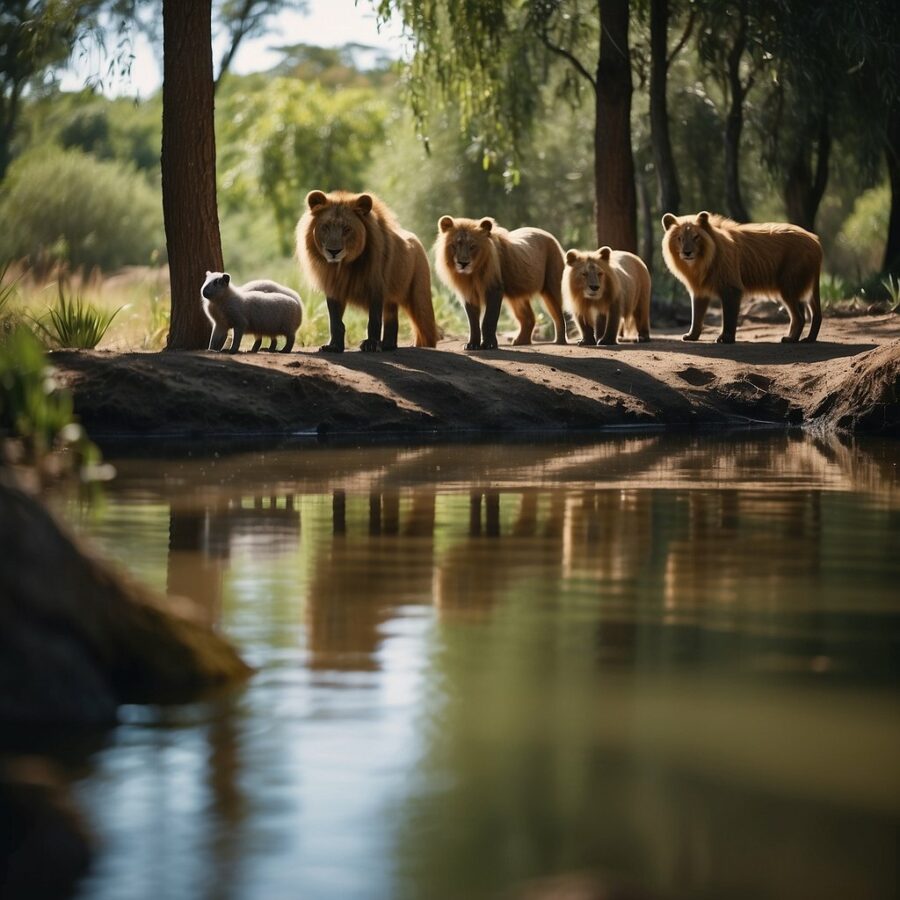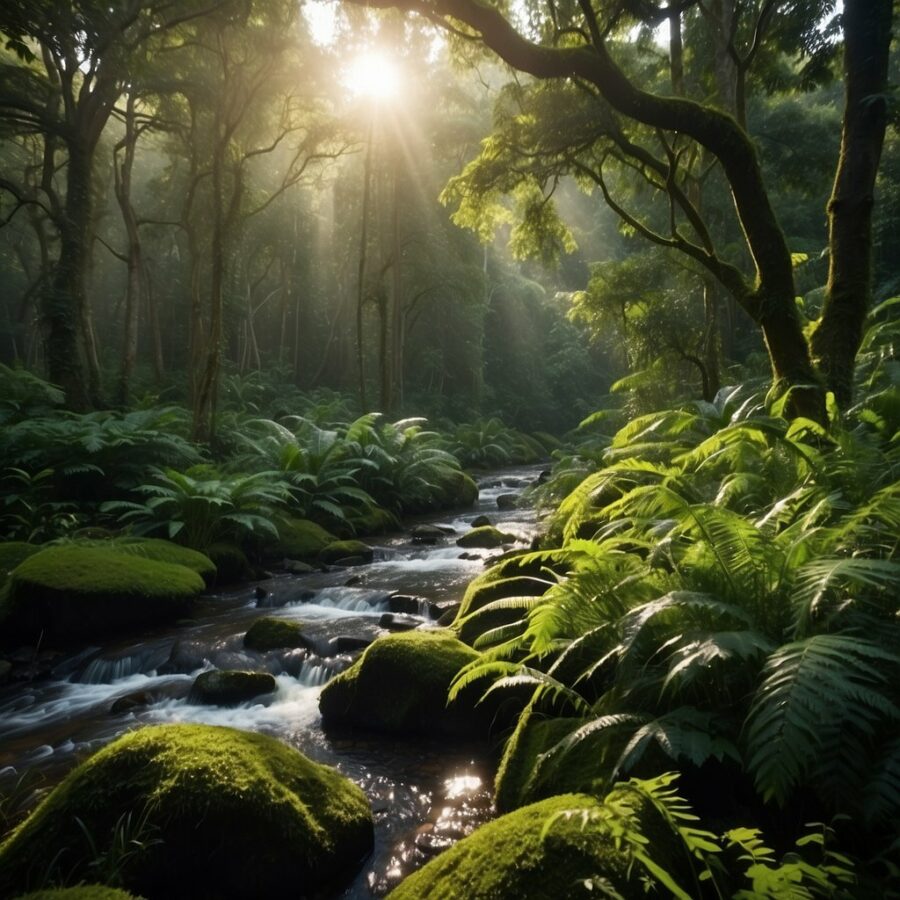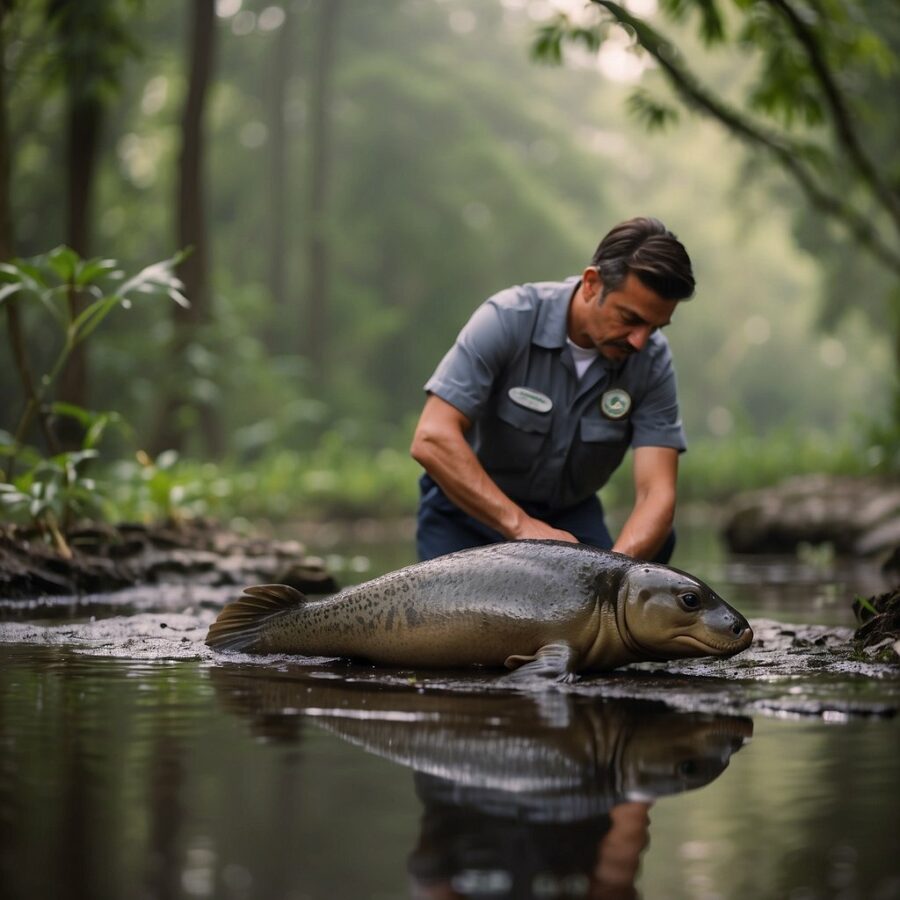Wildlife conservation in 2024 continues to be a critical focus as biodiversity faces increasing threats from habitat loss, climate change, and human encroachment. Recognizing the invaluable roles that diverse species and ecosystems play in the health of the planet, conservation efforts are evolving. Innovations in technology and an intensified global commitment are reshaping how conservation is approached. The work being done encompasses protecting individual species and preserving and restoring their habitats, which are vital for their survival and the overall ecological balance.

The conservation community, including organizations like the David Shepherd Wildlife Foundation and the World Wildlife Fund, marks 2024 as a year to strengthen efforts to safeguard endangered species. Events such as the United Nations World Wildlife Day amplify the importance of intergenerational dialogue and the role of digital innovation in shaping a sustainable future for wildlife conservation. Advancements in digital technologies are enabling the exploration of new frontiers in conservation strategies, offering hope for more effective measures against the threats that wildlife face.
With increased public awareness and a collaborative spirit among nations and conservation groups, 2024 aims to be a turning point in securing a future for the planet’s precious wildlife. As the conservation community leverages digital innovations, there is an optimistic perspective on forming deeper connections between people and nature, ensuring that the earth’s ecosystems continue to thrive for generations.
Conservation Technologies

In 2024, researchers and conservationists are leveraging advanced technologies to revolutionize the field of wildlife conservation. Satellite tracking has become central to monitoring endangered species and their habitats, providing real-time data on movements and population dynamics. This data is invaluable to organizations, including the U.S. Fish and Wildlife Service, which manages the National Wildlife Refuge System, as it informs decisions on habitat preservation and anti-poaching efforts.
Digital innovation also offers promising tools to connect communities with conservation initiatives. Smartphone apps engage citizens in data collection, turning the average person into a researcher, capable of reporting sightings and changes in their local ecosystems. This crowd-sourced data contributes to a larger, more nuanced understanding of wildlife patterns and threats.
Advancements in fieldwork include drones for surveying and AI-powered cameras for species identification, drastically reducing the time and manpower required for data collection. These technologies enable conservationists to track environment changes and detect illegal activities more efficiently.
Blockchain technology is emerging as a means to ensure transparency in the wildlife trade, curbing illegal trafficking by providing a secure, unalterable ledger of transactions. This application holds potential for enforcing regulations and promoting ethical practices within the industry.
Each technological stride brings a new wave of optimism in the preservation of biodiversity. With a collaborative, technology-driven approach, the global conservation community is better equipped than ever to safeguard the future of the planet’s precious flora and fauna.
Habitat Restoration Successes

In 2024, committed efforts in wildlife conservation have paved the way for notable advancements in habitat restoration. Organizations collaborate to employ innovative methods, integrating ecosystem management principles that facilitate holistic community recoveries.
Wetland Investment: The reauthorization of America’s Conservation Enhancement Act has been pivotal. This bipartisan effort has resulted in substantial investments in wetlands and habitat restoration projects across the United States, crucial to maintaining biodiversity.
- Species Recovery: The deliberative approach under the Endangered Species Act has seen positive implications for numerous species, setting a precedent for further global conservation actions.
- Strategies Implementation: Strategies to mitigate wildlife and livestock conflicts are being employed, acknowledging the interspecies requirements and the importance of harmonious coexistence.
Global Partnerships and Monitoring:
- Global Coordination: The Habitat Restoration and Conservation Working Group (HRCWG) actively engages internationally, supporting the UN Decade on Restoration and seeking efficacious habitat recuperation.
- Monitoring Efficacy: Identification and implementation of robust monitoring and evaluation programs are crucial, determining the success rates and providing feedback for restoration techniques.
Funding and Infrastructure: Sustainable funding models are critical, and concrete steps are visible. For instance, the Klamath Basin Restoration Projects received significant funding for water-related ecosystem revival. This also demonstrates the importance of integrating environmental restoration into infrastructural development.
The successes highlight the power of concerted, well-funded conservation initiatives. The synergy between government bodies, conservation groups, and international organizations, all play a fundamental role in the quest to preserve and restore habitats and ecosystems for future generations.
Legislative Victories

In 2024, the conservation community has witnessed significant legislative successes at the federal level, reinforcing the United States’ commitment to wildlife and habitat conservation. A prime example is the bipartisan support and subsequent introduction of the America’s Conservation Enhancement (ACE) Reauthorization Act. Spearheaded by senators Tom Carper and Shelley Moore Capito, the act aims to reauthorize critical wildlife conservation efforts through 2030, encompassing a broad range of habitats across the country.
Notably, the federal government has prioritized the reauthorization of the Multinational Species Conservation Funds, instrumental in the protection of endangered species globally. This legislation bolsters the Endangered Species Act, illustrating innovative approaches to preserving biodiversity.
The conservation initiatives extend to the National Wildlife Refuge System, ensuring these lands and waters continue to provide sanctuary for countless species. They demonstrate a strategic alliance between state authorities and federal agencies, mobilizing resources for the sustained health of ecological systems. Through such legislation, the United States plays a pivotal role in the broader, global effort to safeguard wildlife and their habitats.
It’s an optimistic time for the conservation community as these legislative victories underscore a united and effective governmental response. The impact of these laws is profound, establishing the United States as a leader in conservation and a proponent of a sustainable future for the planet’s diverse species.
Community Engagement in Wildlife Conservation

In 2024, community engagement has become a cornerstone of successful wildlife conservation efforts. Organizations such as the U.S. Fish & Wildlife Service have focused on improving lives by increasing access to green spaces and outdoor activities for individuals living in urban areas. These initiatives often aim to be intentional, with an emphasis on engagement methods that are informed, purposeful, and measurable.
Key Strategies:
- Local Involvement: Inclusion of human communities in planning and decision-making ensures that conservation supports local livelihoods while also protecting wildlife.
- Education and Awareness: Programs designed to educate adults and children alike about the importance of conservation can inspire community-led action.
International examples illustrate how innovative approaches to community engagement have driven successful conservation outcomes. For instance, community-based conservation methods that prioritize local community needs have shown compelling results, such as population growth in previously reintroduced species, such as rhinos, through breeding.
Additionally, the National Wildlife Federation is actively involving youth in the conservation conversation. They invite young climate leaders to form advisory bodies, understanding that they play a critical role in ensuring the longevity of conservation efforts.
With each community’s unique knowledge and experience, collaborative efforts become more effective and sustainable in the long term, ensuring that both humans and wildlife can flourish together. The ongoing trend towards collaborative effort in wildlife conservation is a source of optimism, offering a brighter future for all species involved.
Wildlife Rehabilitation

Wildlife rehabilitation in 2024 remains a vital aspect of wildlife conservation efforts. Rehabilitation centers across the globe dedicate themselves to the recovery and release of injured, sick, and orphaned wildlife, with a primary focus on restoring these individuals to their natural habitats. In Utah, despite setbacks due to facility demolition, wildlife rehabilitators continue to emphasize the importance of rescuing species in trouble, underscoring the intricate balance between species survival and population size.
Key Components:
- Rescue & Recovery: Professionals and volunteers provide medical care to wounded animals, ensuring their return to the wild when possible.
- Species Preservation: Through rehabilitation, endangered species receive targeted assistance that may contribute to preventing local extinctions.
- Public Education: These centers educate the public on human-wildlife conflicts, promoting peaceful coexistence and conservation awareness.
Innovative approaches are being introduced to enhance the rehabilitation process, including the use of advanced medical treatments and species-specific recovery programs.
Strategies Adopted | Description |
|---|---|
Science-based Protocols | U.S. Fish and Wildlife Service proposes revisions to policies ensuring that the best management practices are rooted in science. |
Legislative Support | Initiatives like the America’s Conservation Enhancement (ACE) Reauthorization Act aim to bolster habitat and wildlife preservation efforts. |
Community Involvement | Local and national seminars, such as those organized by the National Wildlife Rehabilitators Association, increase community engagement in rehabilitation efforts. |
By integrating such multifaceted strategies, wildlife rehabilitation becomes a crucial bridge between current conservation efforts and the long-term sustainability of ecosystems, contributing to an optimistic outlook for nature’s balance.
Climate Change Mitigation

In 2024, conservation efforts are increasingly recognized as vital for climate change mitigation. Conservation of natural resources and biodiversity plays an essential role in addressing the changing climate. These efforts not only aim to sustain wildlife populations but also contribute to the stabilization of Earth’s climate systems.
The U.S. Fish & Wildlife Service, with a budget proposal for fiscal year (FY) 2024, emphasizes the maintenance and enhancement of biological integrity and diversity. This approach involves innovative strategies to conserve wildlife, counteracting the adverse effects of climate change and aiding in the absorption of greenhouse gases.
- Wildlife Conservation and Climate Mitigation:
- Ecosystem preservation: Maintaining ecosystems can sequester carbon and regulate the Earth’s climate.
- Species protection: Protecting diverse species ensures natural processes that are crucial for climate balance.
It’s important to note that climate change is a key driver of species decline. The role of conservation is twofold: it serves to safeguard the planet’s biodiversity and acts as a natural buffer against climate extremes.
The World Wildlife Fund and similar organizations highlight 2023 as a critical year for climate action. With the warmest year on record, there’s a surge of concern around the acceleration of climate change. Conservation efforts in 2024 reflect a dynamic and responsive approach, suggesting a proactive stance in mitigating the impact of a warming planet.
Through a synthesis of government policy, scientific research, and public stewardship, there is an optimistic view that these concerted efforts will yield significant results. Not only for the protection of wildlife and natural habitats but as a cornerstone in the fight against climate change and its global ramifications.
Biodiversity Initiatives

In response to escalating threats to biodiversity, 2024 has witnessed significant global momentum aimed at preserving the planet’s ecosystems. An initiative by the International Union for Conservation of Nature (IUCN) underscores this global commitment. Launched in Samarkand, Uzbekistan, it targets the protection and connection of vital habitats crucial for the survival of migratory species.
North American endeavors are also noteworthy. The Biden-Harris administration’s budget emphasizes wildlife conservation, allocating $2.1 billion for resource management. This funding bolsters efforts to preserve critical habitats and fosters the connectivity of ecosystems across the continent.
Notably, the World Wide Fund for Nature (WWF) continues to play a role, concentrating on safeguarding species representing significant ecological, economic, and cultural values. Their work champions the equilibrium of nature, underscoring the interdependence of species and habitats.
The Convention on the Conservation of Migratory Species of Wild Animals report reflects both challenges and successes; it highlights that while some migratory species are rebounding, many face threats from habitat degradation.
The gap in financing for biodiversity conservation is a concern. Innovative strategies, like the entreprenurial Conservation Investment Initiative, aim to bridge this with novel biodiversity financing solutions, thus ensuring the sustainable management of natural habitats.
These diverse initiatives reflect a cohesive global movement towards conserving the Earth’s biodiversity. They protect species and enhance ecosystems’ resilience, ensuring the preservation of habitats and the continuance of the planet’s natural heritage.
Educational Programs

Educational efforts in 2024 are key to fostering a global understanding and appreciation for wildlife conservation. The World Wildlife Fund (WWF) continues to support emerging conservation leaders through the Russell E. Train Fellowships. This program is geared towards graduate-level students focusing on human-wildlife conflict and coexistence, particularly in areas like Uganda where such issues are pronounced.
The U.S. Forest Service engages individuals across various age groups with their Conservation Education outreach. It provides resources and programs that aim to increase public awareness about the environment and the management of national forests and grasslands.
- WWF-U.S. Educational Fellowships support candidates pursuing master’s or doctoral degrees in conservation.
- Conservation Science Summer Fellowships offered by the San Diego Zoo Wildlife Alliance are open for application for students to collaborate with experienced conservation teams.
In tandem with educational programs, the National 4-H Wildlife Habitat Education Program (WHEP) offers a specialized curriculum on wildlife management, complementing traditional educational formats with contest-based learning.
Organization | Program | Focus | Awards/Recognition |
|---|---|---|---|
WHEP | Wildlife Management Curriculum | Conservation Education Award | |
Russell E. Train Fellowships | Human-Wildlife Conflict | Global Impact | |
Conservation Education | Environmental Learning | National Reach |
Engagement with entities such as the U.S. Fish and Wildlife Service and adherence to international frameworks like CITES (Convention on International Trade in Endangered Species of Wild Fauna and Flora) is vital for these programs. Educating the current and next generation on these topics prepares stewards of wildlife conservation who can think globally and act locally with innovative strategies to preserve biodiversity.
How You Can Help

Individuals can actively contribute to wildlife conservation through a variety of actions. They can start by educating themselves about local and global conservation issues to understand species and ecosystems’ challenges. Additionally, they can support and volunteer with organizations working on the ground to protect habitats and biodiversity.
Working with the federal government, one can advocate for policies that focus on conservation efforts, such as protecting endangered species and reducing plastic waste to mitigate its impact on wildlife. Engaging in public comment periods and voting for conservation-minded representatives are direct actions that contribute to policy change.
Financial support is another avenue. Donations to trustworthy conservation organizations provide critical funding for research, habitat restoration, and innovative conservation strategies. It’s essential to research these organizations to ensure that funds contribute to meaningful and effective conservation work.
Participation in citizen science projects is a creative and inclusive way to help. This involves collecting data that aids scientists in understanding ecosystems and tracking the health of species populations. Such involvement supports conservation and enhances one’s connection to the natural world.
Lastly, individuals can reduce their ecological footprint by making sustainable choices. Simple actions like reducing waste, choosing sustainable products, and decreasing energy consumption can make a significant difference in conserving habitats and the species that depend on them.
By taking these steps, each person can play a part in the broader effort to sustain and restore vibrant ecosystems for future generations.